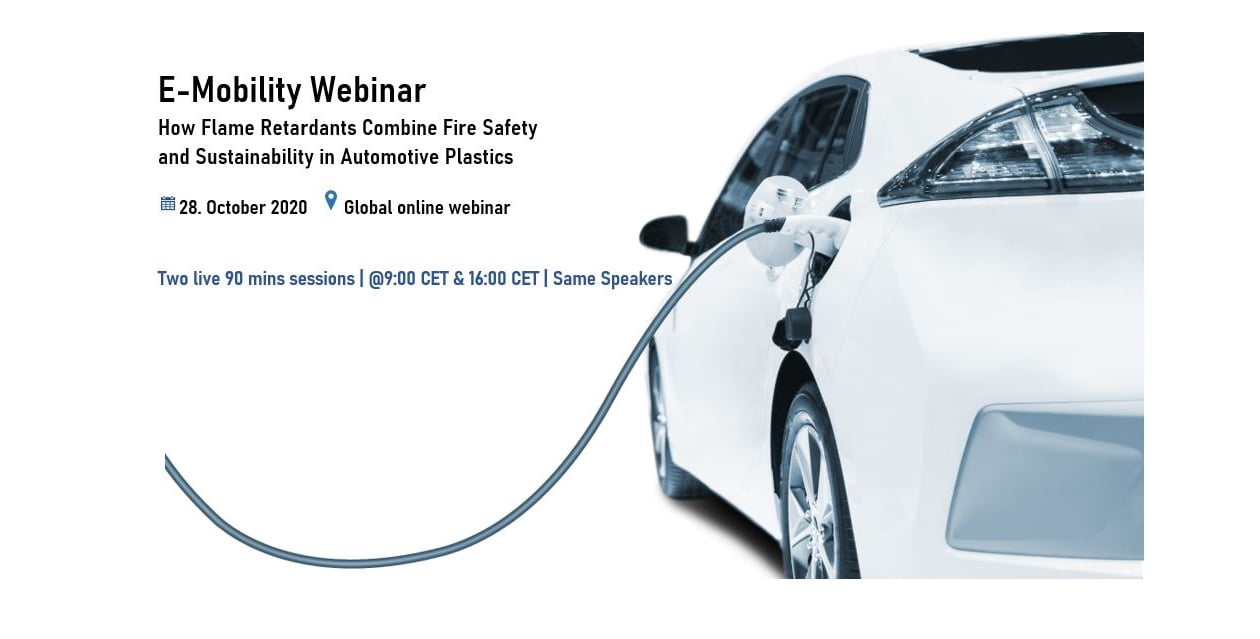
Wed. 28th October, 9h00 & 16h00 CET– click here to register
The global electric vehicle (EV) market was estimated at 160 US$ billion in 2019 and is expected to grow to over 800 billion US$ by 2027. Electric car sales increased 40% year-on-year in 2019, reaching around 2.6% of global car sales, and resisted better than the rest of the market to the Covid downturn in the first half of 2020 (57% EV growth in Europe despite an overall car market decline of -37%). It is estimated that a third of the world car market will be electric or hybrid by 2030, and even if this proves wrong, it is clear that the current low market share means that potential for growth remains huge.
Existing road vehicles already represent a fire risk: over 202 000 vehicle fires, causing 560 deaths, 1 500 injuries and nearly 2 billion US$ property damage in the USA alone (2018).
But electrical and hybrid vehicles bring new and increased fire safety risks:
- Specific fire risks of batteries, related to high energy concentration when fully charged (“stranded energy”), to possible mechanical faults and to risk of runaway
- High voltages and currents with risks of overheating and arcing, both in (fast) charging and vehicle operation
- Proximity and interconnection of electronics (battery management), power and communications (5G)
- More cables and connectors than in traditional vehicles
This is already leading to new fire safety standards for electric vehicles: mandatory (e.g. in China from 2021) or reinforcing existing industry standards for all vehicles, UL 94 V0 for electrical / electronic components, and increasingly EN 62368 for “communications” systems in all vehicles.
Demanding levels of fire resistance for EV components must be achieved in materials offering ultra-high performance and/or specific EV characteristics:
- Weather, moisture, oil/chemical corrosion resistance, durability, mechanical characteristics and electrical performance, laser marking and laser welding compatibility, colour and UV stability … are as demanding as for all vehicles
- Temperatures in electrical motors range from negative to 180°C, and in batteries can reach 80°C
- Emphasis on weight gain (strength / mass ratio), in order to compensate battery weight and improve vehicle autonomy
- Battery structure, enclosure and protection, with batteries now up to 400 kg
- Safety orange coloration enabling identification of high-voltage cables and connectors
- Processability, including for thin parts (to reduce weight) and overall cost
This pinfa webinar will discuss PIN flame retardant solutions in different engineering polymers, cable plastics and composites for EVs, including in developing materials such as epoxies, rigid polyurethanes and carbon fibre composites. The aim is to respond to the needs of compounders and polymer producers, component suppliers and vehicle manufacturers to find PIN (non-halogen phosphorus, inorganic, nitrogen) solutions because halogenated flame retardants can lead to voltaic corrosion of connectors or electronic components, growth of metal dendrites leading to circuit failures, mechanical or colour deterioration, as well as posing environmental questions.
The webinar 28th October 2020 will have two live sessions (each 90 mins) with the same speakers and presentations at 9h00 and 16h00 CEST, in both cases with online exchange and networking between all registrants and speakers (chat, Q&A) and discussion sessions, with speakers from leading PIN flame retardant producers, E&E equipment providers and downstream users. Content will build on the pinfa electromobility workshops already organised in China 2018 and Japan and Europe 2019 (see pinfa Newsletter n° 103).